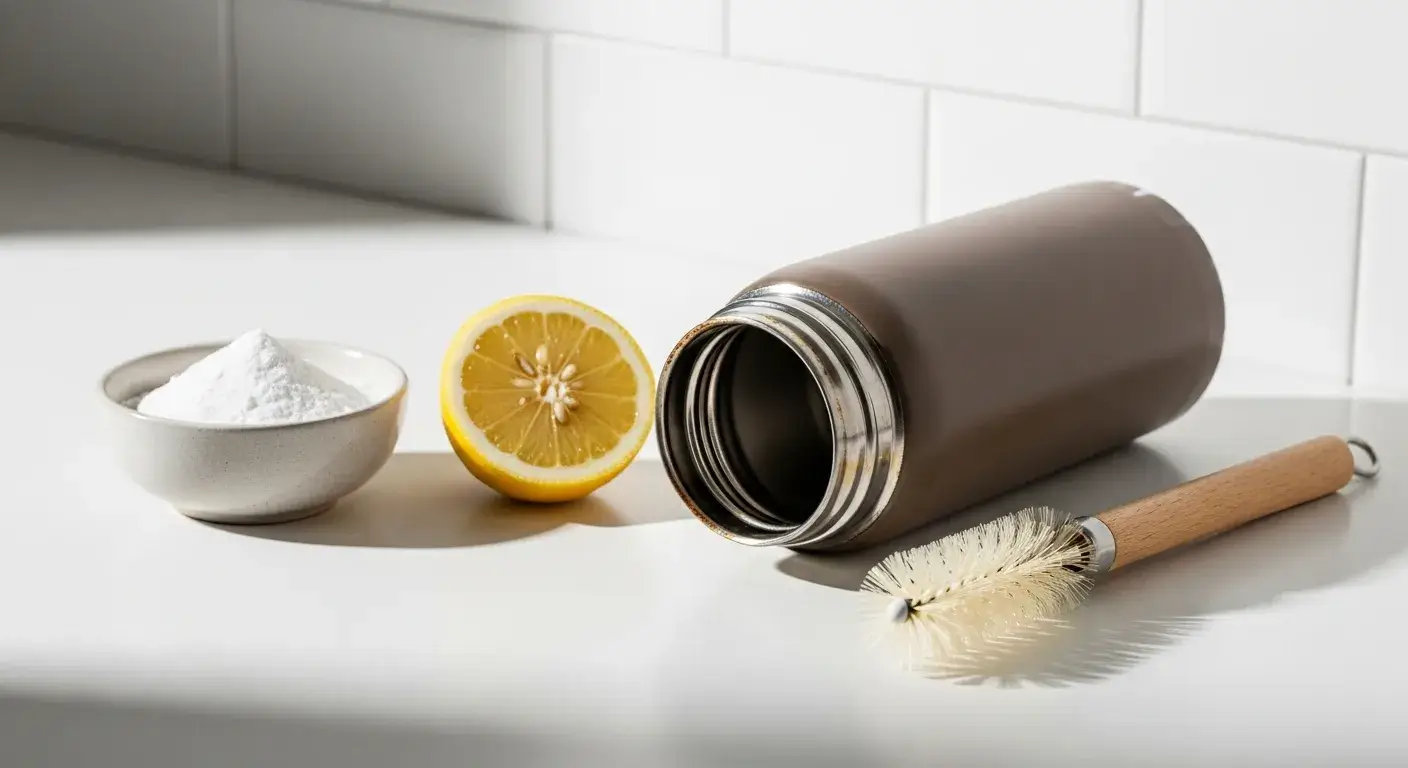
Struggling with ugly brown stains in your favorite metal bottle? Discover safe, simple ways to clean and keep it spotless.
Tea stains in metal bottles are caused by tannins, plant-based compounds that cling to stainless steel surfaces. These can be removed using common household ingredients like baking soda, vinegar, or denture tablets.
Keep reading to learn exactly how to clean your metal bottle and prevent tea stains from coming back.
What Causes Tea Stains in Metal Water Bottles?

Tea stains are a headache. They stick, spread, and look bad. But once I understood the science behind them, cleaning got easier.
Tea stains are caused by tannins in tea, which bond to stainless steel surfaces and build up without frequent cleaning.
What Are Tannins and Why Do They Stain?
Tannins are naturally occurring compounds1 found in tea leaves. They're what give tea its bitter flavor and dark color. When tea sits in a metal water bottle, tannins interact with oxygen and the bottle's surface, creating brownish residue that clings tightly.
When Do Tea Stains Form Most?
- After tea cools and dries inside the bottle.
- When the bottle is left unwashed for long periods.
- If the tea is very strong or dark (like black tea or chai).
Why Does Stainless Steel Still Stain?
Although stainless steel resists corrosion, it's not immune to staining. Tannins bond to stainless steel surfaces2 through the microscopic imperfections on the steel surface, making it hard to rinse off with water alone.
What Are the Most Effective Methods to Remove Tea Stains from Metal Bottles?
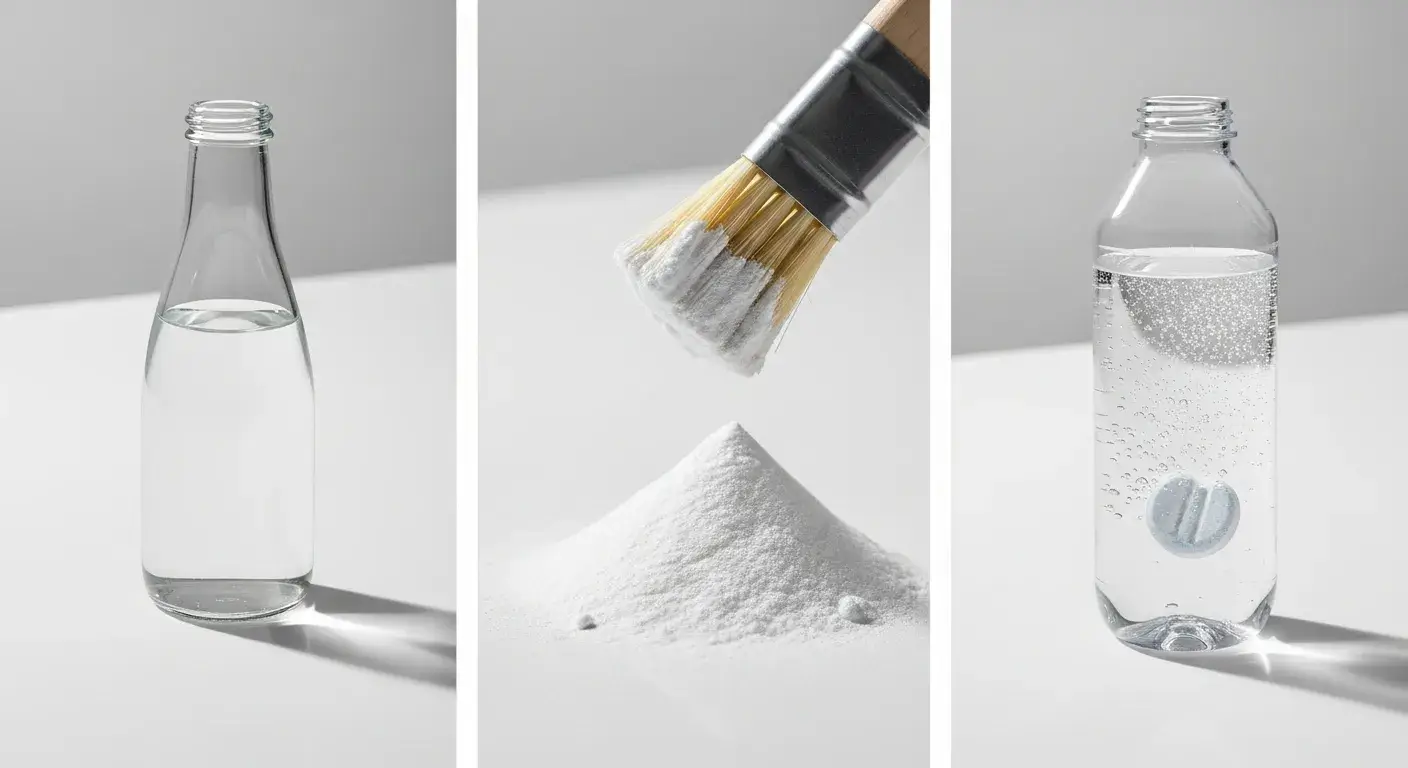
I've tested dozens of ways to clean my bottle—some worked, others didn't. Here's what truly works.
Top methods include baking soda, vinegar, or denture tablets3—each targets stains safely and effectively.
Cleaning Methods Comparison Table
| Cleaning Method | Effectiveness on Tea Stains | Time Required | Notes/Precautions |
|---|---|---|---|
| Baking Soda Paste | High | 5–15 min | Gentle, safe for stainless steel |
| White Vinegar Soak | High | 15–20 min | Rinse thoroughly to avoid lingering odor |
| Denture/Bottle Tablets | Very High | 15–60 min | Great for hard-to-reach spots |
| Lemon & Salt | Moderate | 5–10 min | Natural, eco-friendly |
| Hydrogen Peroxide | High | 15 min | Use with caution, rinse well |
| Bleach | Not recommended | — | Can corrode stainless steel |
Can Household Ingredients Like Baking Soda and Vinegar Remove Tea Stains?

Don't want to buy fancy products? Good news—your kitchen already has what you need.
Yes, baking soda, vinegar, lemon, and salt can safely and effectively remove tea stains from stainless steel bottles.
How to Use Baking Soda and Vinegar
- Baking Soda Paste: Mix 2 parts baking soda with 1 part water to make a paste. Scrub with a bottle brush.
- White Vinegar Soak: Fill the bottle with vinegar, let sit 15–20 minutes, then scrub and rinse thoroughly.
Is It Safe to Mix Them?
Mixing baking soda and vinegar creates a fizzy reaction. It's fun, but not stronger than using them separately. Use each method on its own for the best result.
Why They Work
- Baking soda is mildly abrasive and alkaline—it lifts stains gently.
- Vinegar is acidic—it dissolves tannins and neutralizes odors.
Are Commercial Cleaning Tablets Safe and Effective for Metal Bottles?
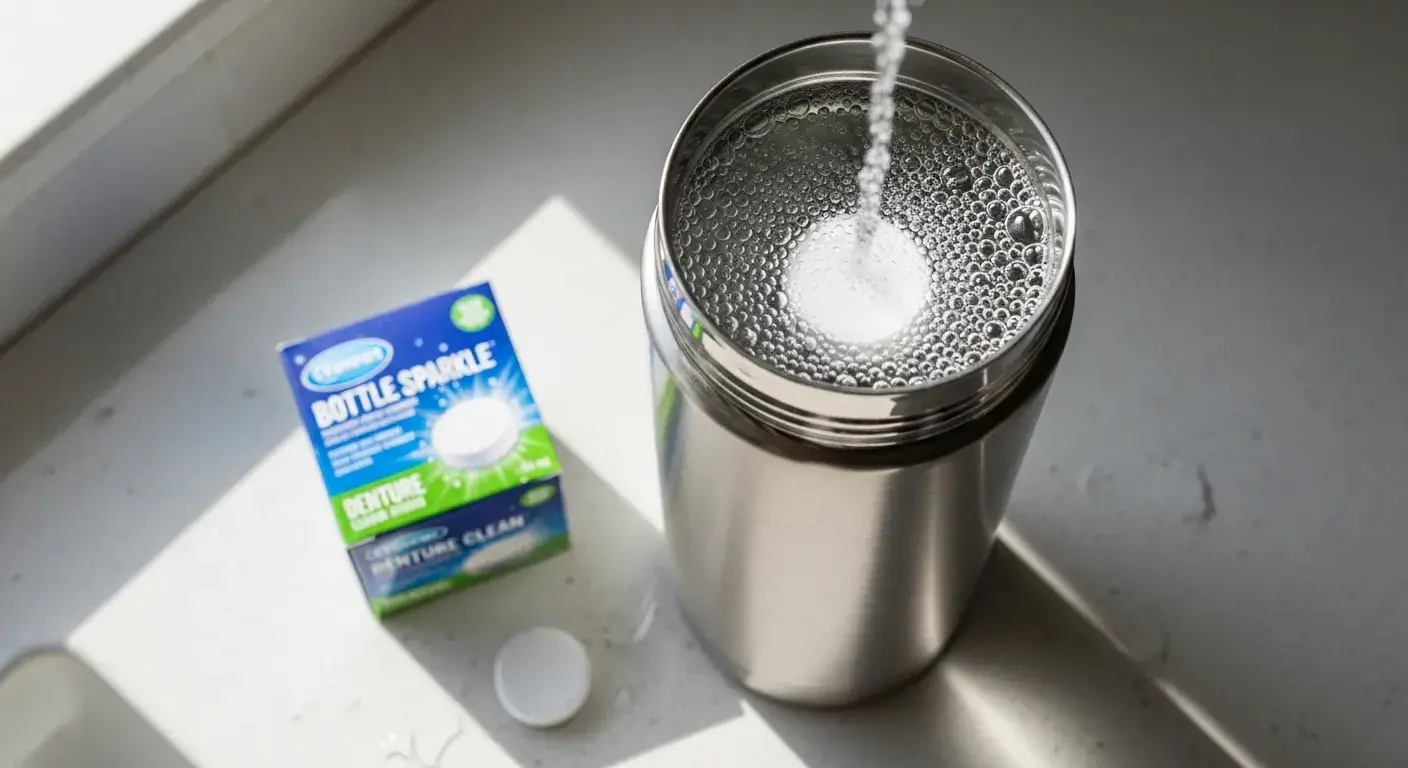
I once forgot about my tea-filled bottle for a week. Only cleaning tablets saved it.
Yes, denture or bottle-cleaning tablets are effective4 for tough stains and safe for stainless steel when used properly.
Best Commercial Tablets
- Bottle Bright
- Milton Sterilizing Tablets
- Denture Cleaning Tablets (e.g., Polident)
How to Use Them
- Drop one tablet into the bottle.
- Add warm water.
- Let it fizz for 15–60 minutes.
- Rinse thoroughly.
Advantages
- Cleans corners brushes can't reach.
- No scrubbing required.
- Neutralizes odors and removes stains.
How Do I Clean Hard-to-Reach Areas in My Water Bottle?

Narrow-neck bottles are the worst to clean. I tried soaking, shaking, and even toothbrushes. Here's what works.
Use bottle brushes, cleaning tablets, or vinegar soaks5 to clean areas your hands can't reach. Letting solutions sit longer helps loosen stains.
Tips for Deep Cleaning
- Use a long-handled brush with firm bristles.
- Soak with a vinegar or tablet solution for at least 30 minutes.
- Add rice and water, then shake to scrub internal surfaces.
Tools That Help
- Silicone bottle brush
- Straw cleaner
- Baby bottle sterilizer
What Should I Avoid When Cleaning Tea Stains from Metal Bottles?
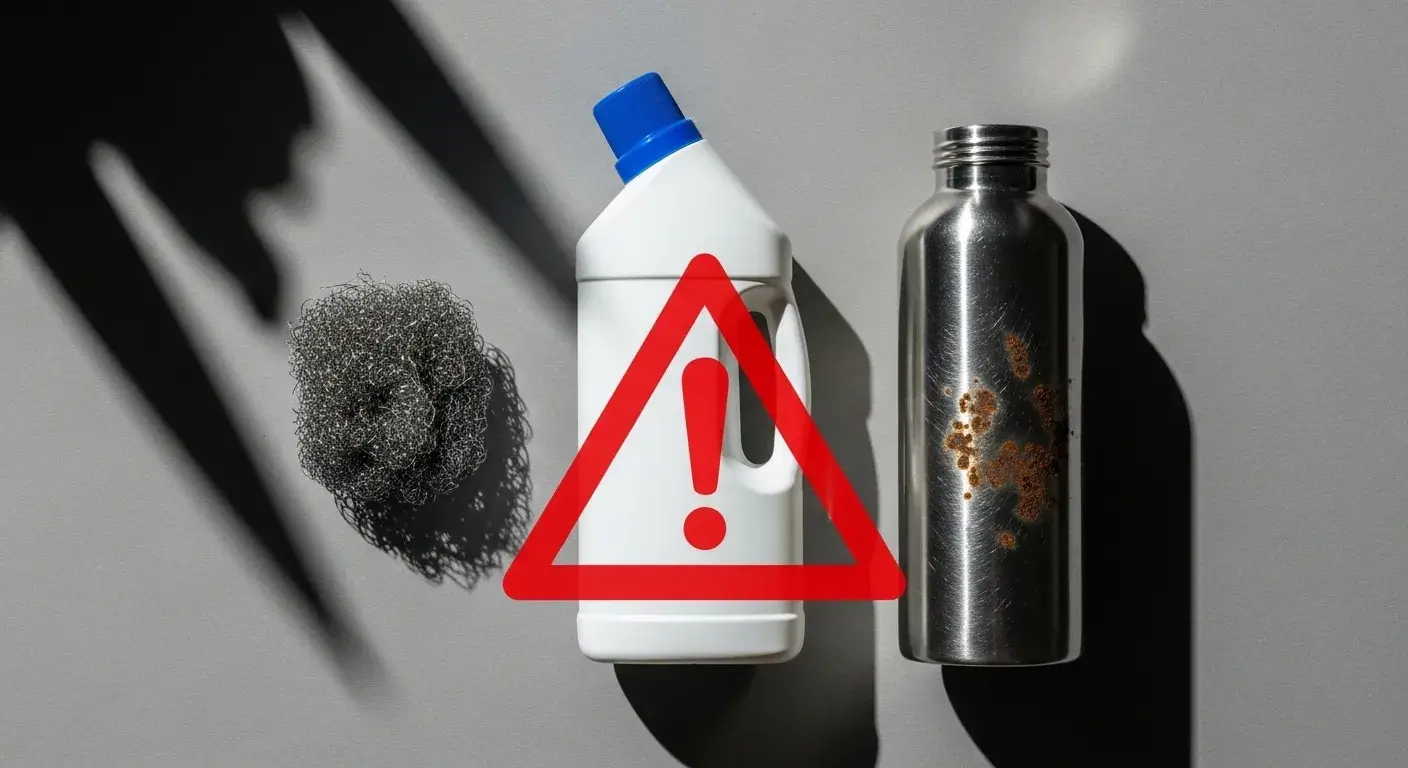
Some cleaning hacks on the internet actually ruin your bottle. I learned this the hard way.
Avoid bleach, steel wool, and strong chemical cleaners. These can corrode stainless steel or leave toxic residues.
Unsafe Methods
- Bleach: Corrodes steel, creates toxic fumes.
- Steel Wool: Scratches the surface, making it stain faster next time.
- Dishwasher for painted bottles: High heat can warp or damage custom logos or finishes.
How Often Should I Clean My Metal Water Bottle to Prevent Stains?
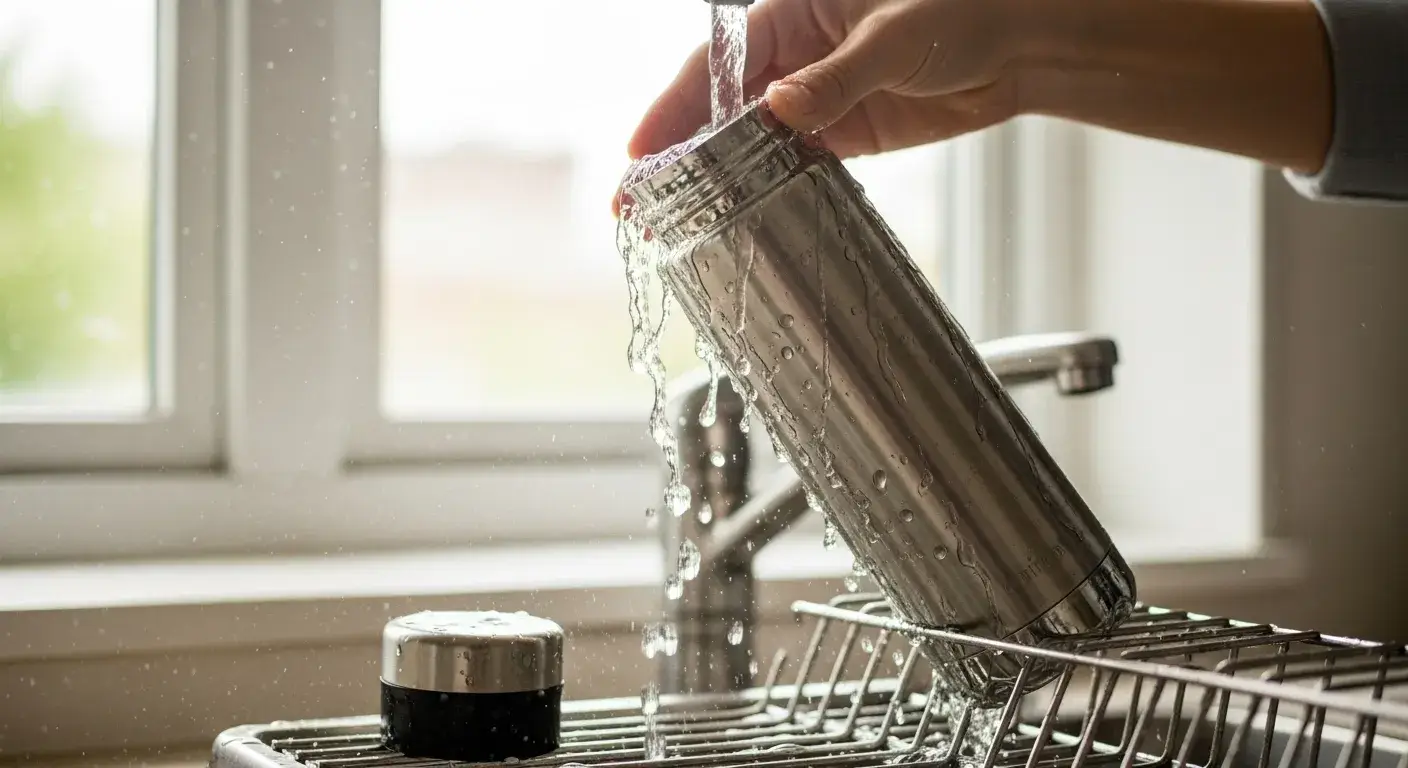
Ever smelled your bottle and regretted it? That's a sign of bacteria and residue. Cleaning frequency matters.
Clean your metal bottle daily to prevent stains and bacteria. Deep clean with stronger methods weekly for best results.
Frequency Matters
- Daily cleaning: 162 CFU/100 cm² bacteria.
- Monthly cleaning: 429 CFU/100 cm² bacteria.
My Routine
- Rinse and air dry after every use.
- Deep clean every 3–4 days if used for tea or smoothies.
- Store open and upside down to dry completely.
Do Tea Stains Affect the Taste or Safety of My Water Bottle?

I once left tea in my bottle for 2 days. When I drank water after, it tasted like stale tea. Yuck.
Tea stains may affect the taste of your drinks and harbor bacteria7 if left too long, but are not inherently toxic.
What Changes with Stains?
- Water may taste bitter or stale.
- Odors can linger inside the bottle.
- Stains can trap bacteria, especially if moisture remains.
What Are the Best Practices for Maintaining a Stain-Free Metal Bottle?
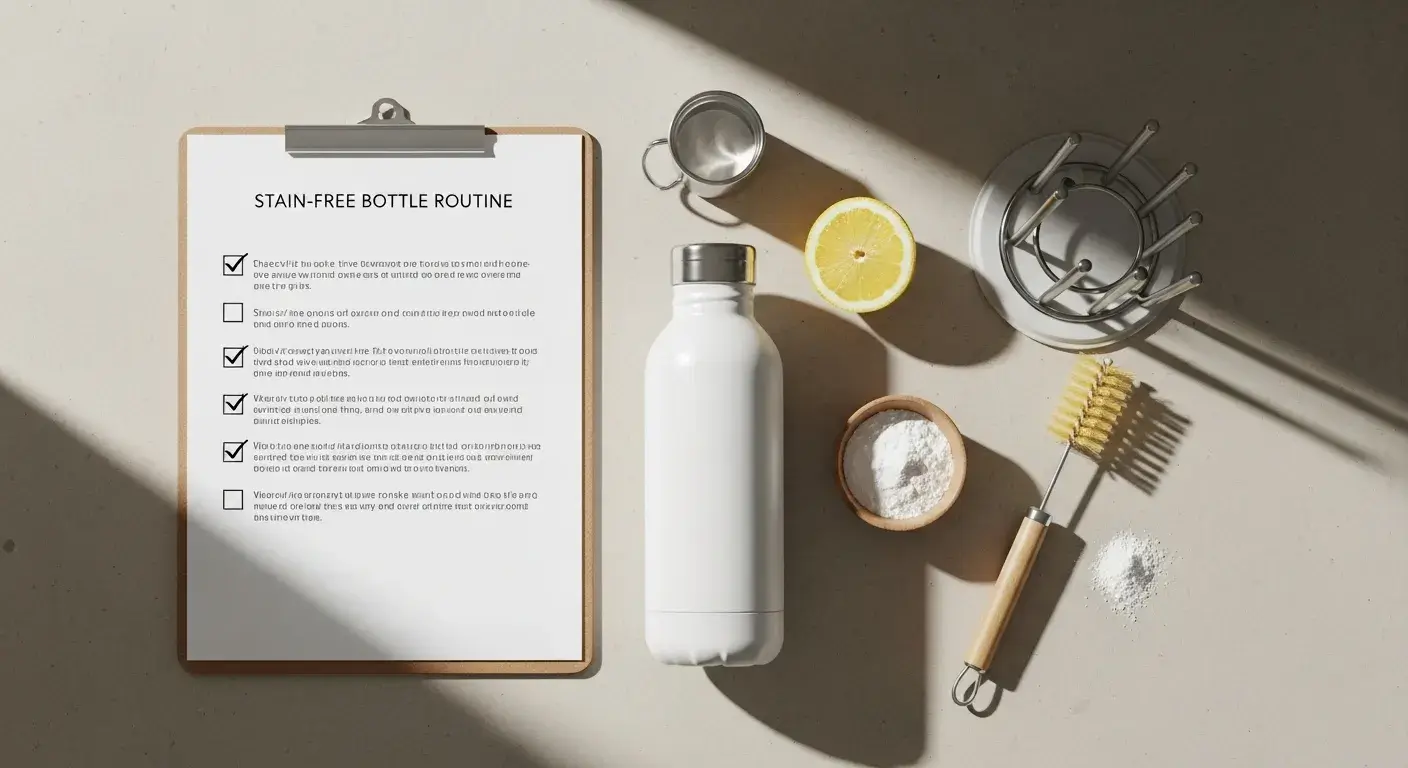
Preventing stains is easier than removing them. A few habits save me hours of scrubbing each month.
Rinse after every use, deep clean weekly, use bottle brushes, and store bottles dry to avoid stains and odors.
Best Practices List
- Always rinse after tea use.
- Clean thoroughly with vinegar or baking soda once a week.
- Dry with the cap off and bottle upside down.
- Avoid sugary drinks that increase stain potential.
Are There Any Scientific Insights on Cleaning Metal Bottles?
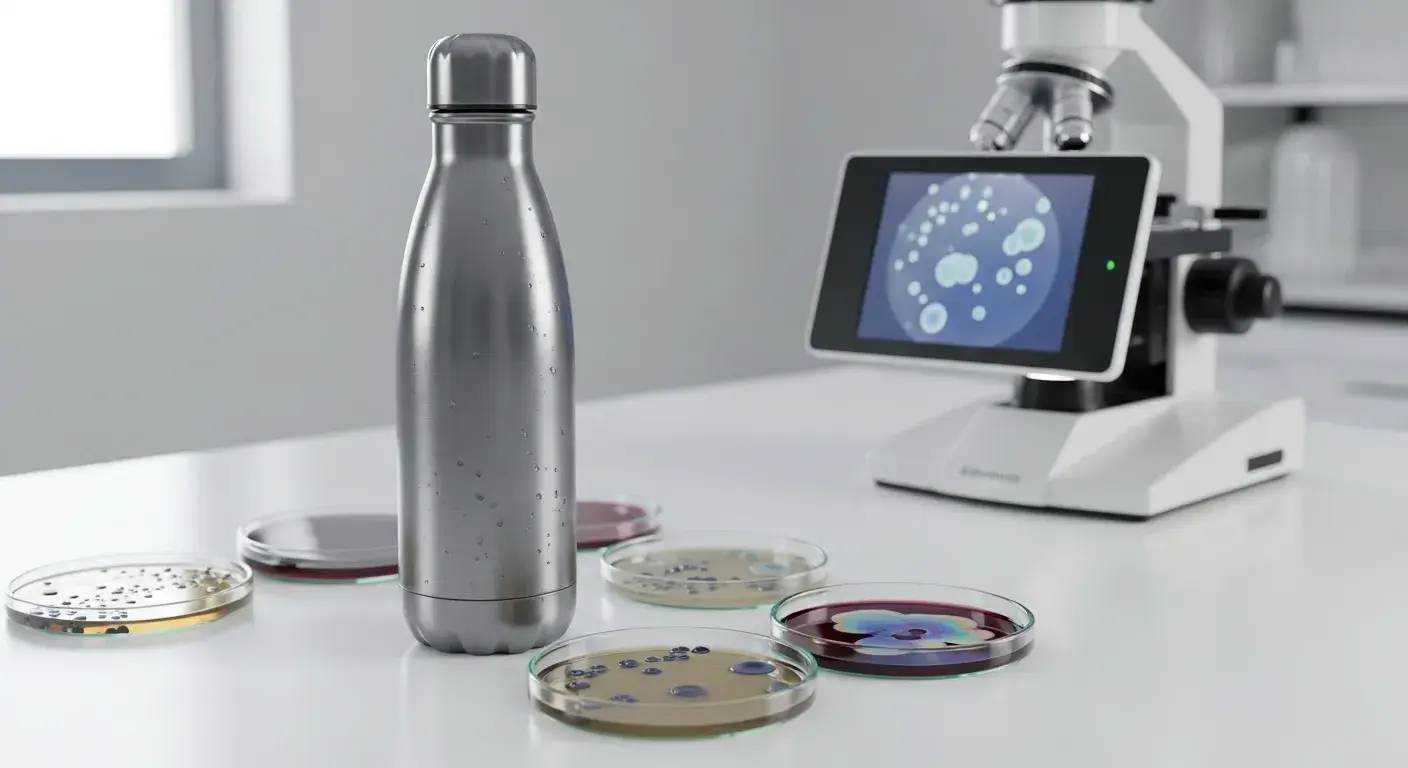
Cleaning isn't just about looks. Studies show it's critical for health.
Frequent bottle cleaning reduces bacterial levels8. Soap, water, and mechanical friction are most effective for sanitizing metal bottles.
What Science Says
- Physical scrubbing removes biofilm better than soaking alone.
- Antibacterial soap and water, used daily, outperform chemical cleaners over time.
- Stainless steel shows fewer bacterial colonies compared to plastic bottles when cleaned regularly.
Conclusion
Clean your metal bottle often, use safe ingredients like baking soda or tablets, and avoid harsh chemicals to prevent tea stains.
FAQs
Can I use baking soda and vinegar together to clean my bottle?
Yes, but use them separately for better results. Together, they neutralize each other.
Is it safe to drink from a bottle with light tea stains?
Yes, but it may affect taste and could trap bacteria over time.
What's the fastest way to remove fresh tea stains?
Use a vinegar soak for 10 minutes and scrub with a brush.
Are denture tablets better than vinegar?
They're stronger for hard-to-reach stains but cost more than vinegar.
Can I use lemon juice instead of vinegar?
Yes, lemon works similarly but may take longer for heavy stains.
Footnotes:
-
Learn from University of Waterloo chemistry research explaining the molecular structure of tannins and how these polyphenol compounds bond to surfaces ↩
-
Understand the chemical reaction between tannins and the chromium oxide protective layer on stainless steel that creates stubborn stains ↩
-
Discover multiple household cleaning methods with detailed instructions for removing tea stains using common kitchen ingredients ↩
-
Read about how denture tablets containing sodium bicarbonate and citric acid break down stubborn stains and kill bacteria in water bottles ↩
-
Find detailed step-by-step techniques for cleaning narrow-necked bottles and hard-to-reach areas using various tools and methods ↩
-
Review peer-reviewed research comparing bacterial levels in water bottles based on cleaning frequency and material type ↩
-
Explore scientific findings on how biofilms from tea and sugary beverages create environments where harmful bacteria thrive ↩
-
Access comprehensive study data showing how usage patterns and cleaning behaviors directly impact microbial contamination in reusable bottles ↩

